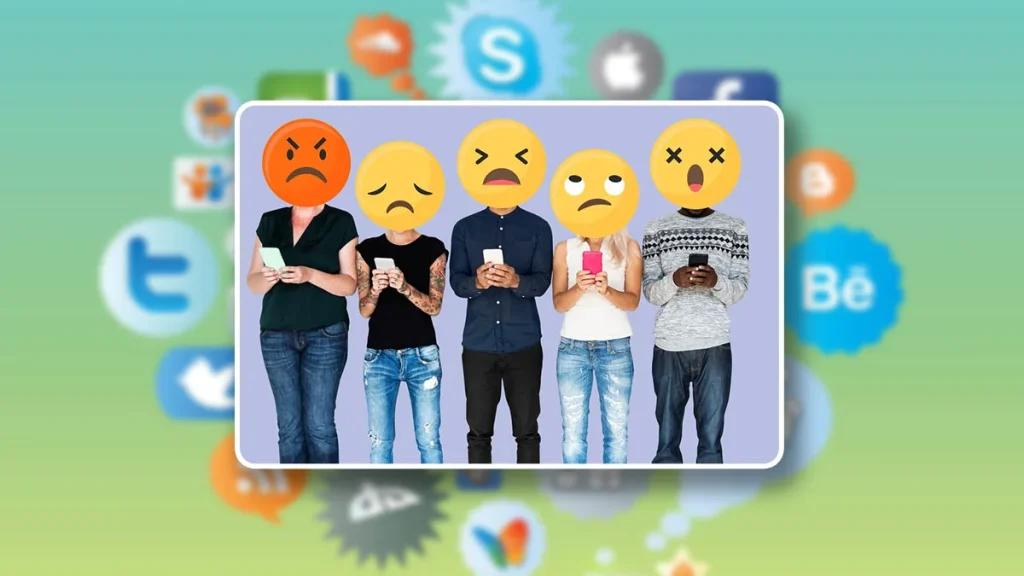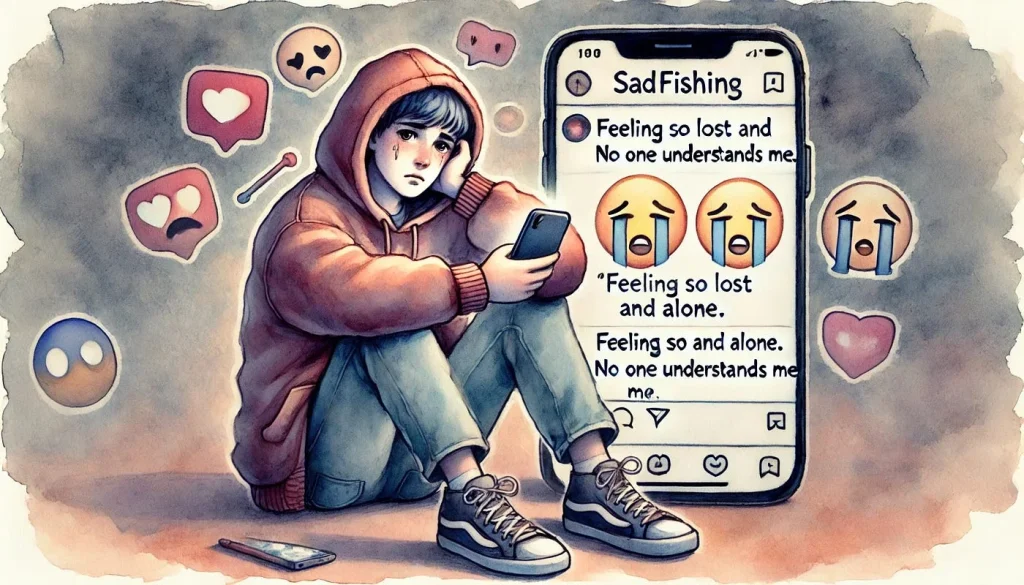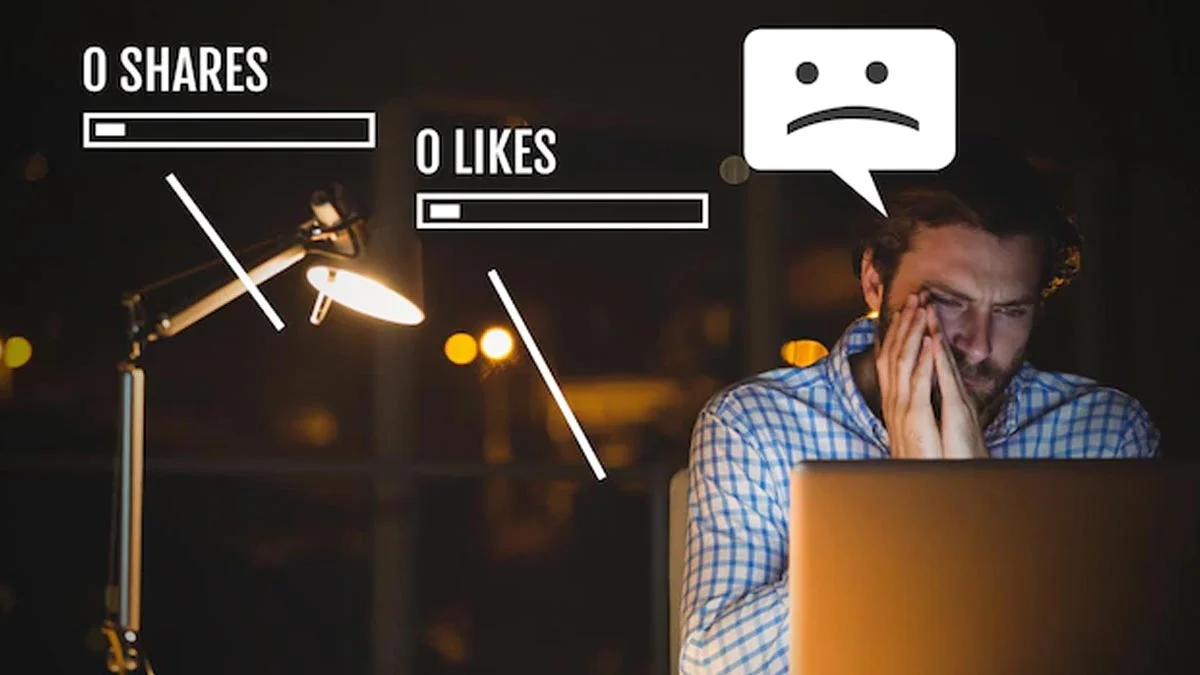In the digital era in which social media has taken over, new trends of presenting themselves form. The so-called “sadfishing” trend has been hotly debated, especially in the context of teens. So, what is sadfishing—and why are all the teens doing it?
In this article,we will shed light on what is happening and why it does psychologically, Risks associated with technology impulsivity, and How parents deal effectively.
What is Sadfishing: A New Social Media Trend?
What Is Sadfishing?
Sadfishing is a term coined to describe the practice of sharing fake emotional problems—commonly on social media—to receive sympathy or attention from others. The phrase popped up during high-profile events where celebrities and influencers were being called out for attention-seeking as they shared too dramatic or emotional content online.
Sharing emotions on social media is not inherently wrong, but sadfishing involves exaggerating issues to a point that may not be accurate. People hear that, and it’s easy to assume any pleas for help are just attention while simultaneously possibly taking the wrong kind of gatekeeping behaviour as though they’re really in a mental health crisis instead.
Although people in the U.K. began referring to this as sad fishing at the beginning of 2019, might that be what drove more U.S. adolescents to adopt its practice? They may be intentional, but whether it happens consciously or otherwise depends on the emotional landscape of young people—simply teens and Young people —who are just beginning to navigate a complex world.

The Way of Teen Sadfishing
The role of psychological factors in sad fishing
It is inherently addictive. The mind behind sadfishing is complicated and manifold. For particular teens, sadfishing may be a method of emotionally expressing their distress in hopes of garnering support from the circles and communities around them. But for some, it could be second guesses to seek attention or validation or just trying to follow the crowd.
A main psychological factor is social comparison, or how individuals view themselves concerning what they see other people doing. For teens who feel less than perfect or even inadequate, sad fishing can be their best opportunity to gain some external validation and lift the spirits of others, at least for a while.
Moreover, a social platform’s anonymity and distance can allow these same adolescents to express emotions they may find difficult in person. This can fuel a feedback loop, resulting in sadfishing being the go-to for external emotional validation and reinforcing such behavioural patterns.
Sadfishing Behavior Mediated by Social Media
Sad fishing is much more common on social media platforms. These platforms are engineered to be sticky, with algorithms that rank content by its ability to evoke strong emotions. This, in turn, will make more of this emotionally charged content find its way into an audience who may well engage.
The endless scrolling, “dead ass” likes we get on our photos after trying to dissect what is captivating the most attention with other users, looking at numbers and which pieces are performing well, only furthers this issue, especially within like culture, e.g., Instagram/Facebook/Tiktok.
Sad fishing among teenagers to get attention. Sad fishing can also be a good way of attracting the public eye because they feel under more pressure than older generations to post. This may happen at school if people target you, such as what happened in real-life troubling experiences against their families and friends.
The Dangers of Sadfishing
Risks of emotional and social nature
Although sad fishing might appear innocuous on the surface, it has many emotional and social hazards. Sadfishing may also generate a cycle of seeking external validation for the person engaging in it. This can be especially problematic for teenagers learning to establish adaptive coping strategies and emotional resiliency.
In addition, sad fishing can weaken online and real-world relationships. Friends or connections may suspect the individual’s intentions and question their integrity. However, sometimes cries for help can be disregarded as attention-seeking, which does the person in question no good.
The constant exposure to sad fishing becomes emotionally fatiguing, desensitizing the audience. This will likely raise the barrier for individuals in real distress, who need understanding and support rather than being accused of (…). Crime against humanity.
Impacts On Mental Health Because Of Sadfishing
Sad fishing has significant repercussions on mental health, especially for teenagers who are already experiencing an increase in known challenges. A heavy dependence on social media for our emotional assurance can contribute to anxiety, depression, and low self-esteem.
When it gets less than the expected reinforcement, it leads to a practitioner of sadfishing feeling isolated or insecure.Tracey believes that sadfishing results in skewed self-perception, leaving users craving external forms of validation to be emotionally well.
When not adequately dealt with, it can block the formation of naturally self-regulating strategies for coping – an essential tool that will undoubtedly be employed less if a teen’s struggle extends into adulthood.

Responding to Sadfishing
Recognize the Sad-fishing Indications
Since teens spend hours a day on their smartphones, identifying sad fishing these days is also difficult for parents. Nonetheless, various warning signs might point to a teenager participating in sad fishing:
- Posting emotional content often: Because it is their MO of how they express themselves, if a teen posts like this frequently (perhaps to the point where it looks exaggerated or doesn’t entirely jive with what you see offline), then there’s much more likelihood that sadfishing could be at play.
- Online Attention Seekers: Teens who regularly fish for likes, comments, or shares and are upset by a lack of additional online content may be sad fishermen.
- Behaviour Changes: If your teen’s mood, behaviour, or interaction with others has suddenly changed, that change correlates to increased social media use—it might be a sign of the emotional effects of sad fishing.
Learn How Parents Can Take Practical Steps
So, parents should help their teens manage social media and instruct them not to fall into these sadfishing traps. Like all the parents, here are a few specific steps you can take:
- Start The Conversation: Encourage open, real conversations about your teen’s experience with social media and how it impacts them emotionally. Your teens should feel comfortable expressing themselves and sharing the experiences they are going through without being judged.
- Monitor Social Media: While you must respect your teen and give them space, knowing about their social media dealings helps. Rework your relationship with these websites and establish boundaries for using social media to prevent any unhealthy habits from forming.
- Encourage Healthy Coping Strategies: Work with your teen to develop mechanisms for when things get stressful or emotional. Physical activity, creative avenues, or mindfulness practices may be some of these.
If you are wondering if your teenager is sad fishing or appears less confident than average, seek the guidance of a therapist.
Mitigating Sadfishing
Publicising Responsible & Healthy Internet Behaviours
These include challenges that encourage users to spread positivity and thwart efforts in sadfishing. Teach teens to use social media in a manner that understands who they are rather than faking to be better or more exciting than they genuinely are.
This might mean limiting social media time, finding a better balance of online and offline activities, or even promoting healthy interactions with peers in positive ways.
The Resources and Support for Teens and Their Parents Model
Teens (and parents looking to curb sadfishing and other social media woes) have plenty of resources. Here are some resources that might help you:
- Mental Health Resources: Groups such as the National Alliance on Mental Illness (NAMI) and Mental Health America specifically support teenagers suffering from stress, anxiety or other types of emotional distress.
- Parental Guidance: Resources such as Common Sense Media offer guidance for parents on internet safety and ways to foster positive online habits among teens.
- Some School and Community Programs: Most schools and a few community programs provide programs/ workshops to raise awareness about digital literacy or mental health. These resources can be helpful for both teens and parents.

Conclusion
Sadfishing is a nuanced and developing fad that mirrors the obstacles adolescents experience in this electronic age. It might seem innocuous — an otherwise benign plea for attention but it comes with tremendous emotional and social costs.
Parents who know about the emotional reasons for landing fish identify its risks and can take precautions so that their teenagers thrive on social networks. Fostering communication, healthy online behaviour, and professional help as needed are crucial for combatting the problem and promoting teens’ emotional health.
FAQs about Sadfishing
Q: How do you distinguish Between sad fishing and genuine cries for help?
Sadfishing consists of distorting or inventing emotional problems through social networks, seeking attention and/or sympathy. Genuine cries for help imply emotional difficulty and an urgent need for support. The main difference in the posts comes down to intent and genuineness. Natural cries for help are no joke and should be taken care of urgently, while sad fishing might look like a cry for validation.
How do we know when sadfishing turns into the mental health concerns of our teens, and how can parents reach out to help?
Parents should check for that same sense of normalcy; however, in the online world, behaviour matches emotions offline. For example, if teenagers constantly post emotional posts online, but the typical sort of distressed behaviour never shows up in real life, then it might be sad fishing.
what can happen if your teen gets caught up in sadfishing?
As a result, sadfishing can create a vicious cycle of dependence where the child feels they need some post to convey their particular state. So messaging continues with pleas or requests down regardless of what covering may be or decreases them when not reported in the same fashion. It can damage relationships, reduce trust, and lead to mental health issues such as anxiety or depression.
HOW CAN TEENS NOT SADFISH?
Instead of exaggerating their feelings in posts, teens may express themselves without trying to make others feel sorry for them. Additionally, it’s essential to establish self-regulation on social media times and offline activities, which promote your feelings of high self-worth and allow you to vent about how you feel with someone who is a good listener, such as trusted friends or family.

Russell F. Jones, holding a Master in psychology from the University of Florida. He writes for Smart Parent Solutions, offering practical advice on parenting and child development. His engaging content helps parents navigate family life with confidence and ease. Russell enjoys sharing his knowledge and spending quality time with his family.
